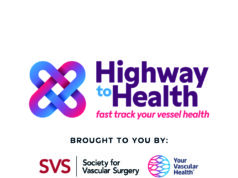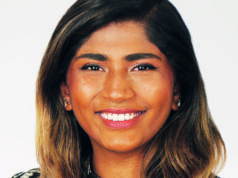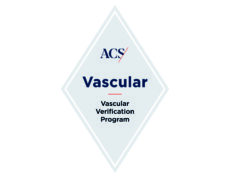
While the COVID-19 pandemic and its effects dominated 2020–21 fiscal year—including the cancellation of the live 2020 Vascular Annual Meeting (VAM)—it did not deter progress on many important initiatives.
“When COVID hit, it intensified our focus on what was truly important: our members, their patients and the SVS as their Society,” said Executive Director Kenneth M. Slaw, PhD. “That focus was sustained the past 15 months and it has led to innovation and an unprecedented volume of member value programs.” He outlined important highlights from the fiscal year that ended March 31—just more than a year after the pandemic was declared—and the vital initiatives that continue to move forward.
“The SVS Executive Board led by President Ronald L. Dalman, MD, was phenomenal, as was the staff leadership, as SVS developed and implemented plans to adjust, plan forward, evolve and weather the storm,” said Slaw.
Priority one was converting the canceled in-person VAM to SVS ONLINE, with sessions held virtually throughout a two-week period. It was essential to continue the Society’s mission of advancing vascular surgery through research and discovery, and continuing education, said Slaw.
Priority two was opening up communication pathways to members. In the pandemic’s early days, with members’ professional lives impacted profoundly, then-President Kim S. Hodgson, MD, instituted a series of Town Halls, focusing on topics of great importance to members. The first covered vascular surgeons’ early experiences with COVID, while subsequent town halls addressed COVID’s impact on education, training and wellness; financial assistance programs; telemedicine; restarting clinical practices and more. The SVS website houses the Town Hall recordings and related handouts and practice tools.
To keep members informed, the biweekly Pulse electronic newsletter began publishing weekly (it has since returned to biweekly dissemination). This led the SVS Executive Board to create a new Communications Committee, with three subcommittees: the existing Public and Professional Outreach Committee, a Website Committee and a Social Media Committee. SVS then acquired and integrated Audible Bleeding, making the popular podcast an official SVS publication.
Priority three was to keep members engaged and offer more opportunities for members to become involved. The SVS Appointments Committee expanded to increase diversity and made the entire application and selection process more transparent and inclusive.
Several key priorities in the SVS Strategic Plan also became top priorities, including branding. A branding toolkit was designed to help members communicate their roles in comprehensive vascular care.
On the quality front, six new clinical practice guidelines were published in 2020, with four more to come in 2021. The Appropriateness Committee will complete the first-ever SVS Appropriate Use Criteria, on claudication, expected to be published shortly after VAM in August. The SVS Vascular Center Verification Quality Improvement Program to certify vascular programs across the country is now nearing completion with field-testing, with a launch targeted for late August. And the SVS Executive Board created a new Quality Improvement Committee.
In education, the groundbreaking SVS Leadership Development Program graduated its first cohort in December 2020 and the second cohort started its work in early 2021. The fifth edition of the Vascular Educational and Self- Assessment Program debuted in July, and the new Learning Management System and video library launched in January.
In Advocacy, the SVS joined the Surgical Care Coalition with 11 other surgical specialties, helping secure an 11th-hour temporary reprieve from Congress on reimbursement cuts to vascular surgery.
The SVS Research Council began the process of completing an environmental scan and establishing top priorities for vascular surgery research, updating its 2010–2020 Published Research Priorities for 2020–30. A white paper is expected shortly after VAM 2021.
The Society, working with hospital data consulting firm Sg2, completed its vascular valuation study, assessing the importance and financial impact of vascular services to health systems. The SVS Supervised Exercise Therapy (SET) app trial launched to great success and is progressing. SVS established a new Population Task Force to begin focus on vascular surgery delivery models in value-based, population-based care systems.
In addition, the Community Practice Committee transitioned to a Community Practice Section. Finally the SVS continued its intense focus on wellness and burnout, launching a peer-to-peer Vascular Surgery Coaching Program with the Academy for Surgical Coaching. “No medical society has ever undertaken something like this,” said Slaw.
In a year that brought racial unrest and diversity issues into full visibility, the SVS Diversity, Equity and Inclusion Task Force completed its work and was formed into a new standing Diversity Committee.
“With great challenges come great opportunities” noted Slaw. And there’s more to come in the years ahead, he promised. “Many of these initiatives are ongoing and we have ambitious plans for what we will do next year.












